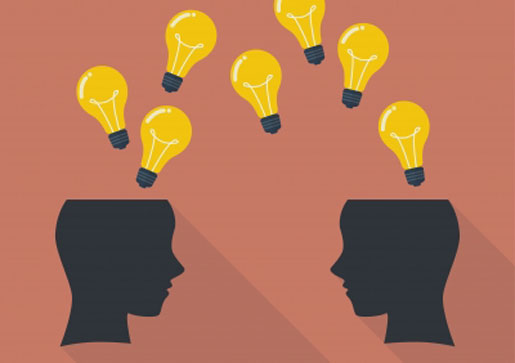The medical and retail markets are learning from each other and starting to blend.
March 14, 2016

The medical and retail markets are learning from each other and starting to blend.
Wellness devices, which walk the line between medical devices and consumer products, continue to grow in popularity as people are gaining the means to take charge of their own health. Because they are partially medical and partially not, their users are a new generation of patient-consumers, who expect to have both the advantages of medical accuracy and traditional retail features. As the patient-consumer rises to prominence, product designers are seeing an opportunity for a new market by harnessing their information as a resource, while investing effort to make a more appealing and attractive product. Meanwhile, though true medical devices have traditionally been designed with a focus on functionality and usability rather than aesthetics, they now need to look attractive to patient-consumers who have more choice in the global marketplace. This also leads to patient satisfaction increasing as the product becomes more appealing, further incentivizing a focus on aesthetics.
Retail products are harnessing medical information, medical devices are using retail strategies, and wellness devices are doing a bit of both. This blending of the medical devices and retail markets is already happening, and is sure to continue in the future. Here's a few more examples of how.
Life Is Just a Collection of Experiences
Have you ever noticed that nothing beats opening up a new toy? Revere the cool graphics, carefully open the security seal, and then separate the heavy cardboard with the perfect fit. Finally you can get the treasure: a shiny new smartphone or laptop that looks like a million bucks. The Nintendo 64 I received as a kid came in a generic plastic clamshell, like a screwdriver or something from Home Depot. But at some point in the last decade, all consumer electronics started using exceptionally cool packaging, appealing to the masses, and driving up excitement. Now, medical devices are entering the game too. Check out this unboxing of a cochlear implant, a Class III medical device, packaged as if it were a smartphone (credit to Reddit user emalooie for this post). Aesthetic appeal of a product can have profound influence on the emotional response of the user, and the incentive is huge as FDA tracks feedback and requires user-centric design backed by post-market surveillance.
Applications in Retail Market Surveillance
But it's not just medical devices borrowing tricks from retail. The retail sector is including medical features in their devices too, which can be used for advertising and surveying purposes. What if when you walked past an ad it measured your heartbeat or if you were blushing? What if your Fitbit sent anonymous information to Netflix during a movie, to see what parts of a movie really caused a physiological response with a specific demographic? (Credit goes to Frog-design for that idea.) Wellness devices are currently expected to fill this role, but medical devices can do it even better.
Standardized Biometrics
The Internet of Things needs to know more about you to work properly. Want your kettle to turn on when you wake up? Guess we need to know if you're awake. Want your car to go park itself? Maybe a certain hand gesture can make that happened. Standardized biometrics--biometrics that can be output by one brand of device and be read by an entirely different brand--have a number of applications in retail as more and more devices become connected.
Here is where wearable devices could really revolutionize the retail market. Let's consider one small example: say I live in a downtown apartment and walk 8 minutes up hill to work. My wearable knows my general fitness level, and then records my heartrate, sweat, location, and timing on my walk to work each morning. That commute can be rated 1-10 for difficulty, and posted when an apartment near me is put up for rent. Apartment hunters can be told automatically how suitable their commute is. Google kind of already does this to predict general travel times with GPS (yes, your Android sends out that data), but they don't appear to tailor it for every user. Now picture this rating system applied to mattresses for sleep, food for digestion, or even job postings for stress. The market for standard biometrics, powered by wellness information that has overcome digital health barriers, could explode into these areas.
What Else Could Standardized Biometrics Information Be Used for?
Right here in Victoria, BC, there is a great new company called Echosec with a very interesting business model: they aggregate social media posts to collect real time information, mostly for security applications. Police can pull up information from a certain time and place a crime may have happened, or monitor location based media posts to find out what is happening and where. Picture if wearable biometrics such as heartrate were thrown into the mix. A group of spiked heartbeats on a whole street corner might mean a traffic accident, and they can respond before the 911 call is even made. They could even pull files for use in court.
Sound Creepy?
We know there is a thin line between wellness and medical devices, and so the required privacy of your information sits on the same knife's edge. On one side, HIPAA and other regulations insist all medical records are kept safe and totally private from unauthorized access. If the device falls on the other side of the line and is considered a wellness device, then the Wild West retail rules apply. Simply tick the box at the end of the user agreement, and your information is in someone else's hands. This might be a little eerie to think about, but government bodies will continue to maintain the definition of medical devices and protect personal medical information. The implication of a safer society through anonymous data is a powerful force, and we've seen the potential market and benefits of community data are plentiful.
In the coming years, we will see fewer and fewer differences between sales strategies of medical devices and retail products. As the number of patient-consumers continue to rise, the market will take every advantage they can to improve user experiences, while harnessing the power of big data to blend the two even further. Whether it's medical devices being packaged in retail packaging or being used for non-medical purposes, the merging of these industries will affect us all professionally and personally. Are you ready to market to, and become, the patient-consumer?
|
Nigel Syrotuck is a mechanical engineer at StarFish Medical, a medical device design company headquartered in Victoria, British Columbia.
[Images courtesy of SIRA ANAMWONG/FREEDIGITALPHOTOS.NET and STARFISH MEDICAL]
About the Author(s)
You May Also Like



